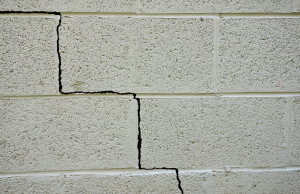 In late January 2016, a massive, magnitude-7.1 earthquake struck Alaska, shaking the capital city of Anchorage and most of the southern part of the state.
In late January 2016, a massive, magnitude-7.1 earthquake struck Alaska, shaking the capital city of Anchorage and most of the southern part of the state.
For the sake of comparison, the earthquake that devastated much of Haiti in 2010 came in at magnitude-7.0, while a magnitude-7.6 quake killed an estimated 100,000 people in the Kashmir region of Pakistan in 2005.
In Alaska? This quake cracked a few roads and knocked over some power lines, but otherwise did little lasting damage and took no lives. The truth is, earthquake damage depends heavily on where the strike happens and how many people live there. Although four of every five U.S. earthquakes occur in Alaska, the state is large and remote, so most of those quakes go overlooked.
A national risk
But the risk for homeowners in Alaska and elsewhere is very real. Although most earthquakes in the U.S. occur on the west coast—part of the so-called Ring of Fire—they can and do happen nationwide.
According to the Insurance Information Institute (I.I.I.), earthquakes have happened in 39 states in the last 100 years, and they have inflicted damage in all 50 states in that time. In fact, there are about 5,000 earthquakes in the U.S. each year and the economic damage they cause to private structures has been rising steadily—in part because more and more people are living in earthquake-prone areas, and in part because we’re still using many older buildings that are not properly protected against earthquake damage or up to modern building codes.
Homeowners need to not only be aware of this ongoing, unpredictable risk, but take appropriate steps to protect their homes in the event the worst happens in their area.
It is also important to note that earthquake damage is not covered under standard homeowners insurance policies. It, like flood insurance, is something you have to add separately and pay an extra premium for. According to the I.I.I., deductibles range anywhere from 2% to 20% of your home’s value, depending on what state you live in, and premiums can vary just as widely.
Protecting your home
As a general rule, you’re never going to get much warning about when an earthquake is going to occur and there is no one time of year, or season, when they’re more likely than not. These truly are “anytime, anywhere” disasters, and they range in strength from barely noticeable to downright devastating for entire regions.
Here is what the I.I.I. suggests that homeowners do to protect themselves and their property in the event of an earthquake in their area.
- Anchor bookcases, cabinets and any tall furniture to walls to prevent them from tipping over or causing further damage.
- Anchor large appliances—refrigerators, water heaters, etc—likewise with straps.
- Shelves can be arranged to protect contents in the event of an earthquake. Leave heavier items on lower shelves and install barriers on shelf edges to keep items from sliding off.
- Use heavy wire to securely attach framed pictures and mirrors to the wall.
- Install latches on drawers and cabinet doors to keep them from spilling open.
- On a structural level, anchor bolts and steel plates can be installed between the home and its foundation in order to strengthen the building’s connection to the ground.
- Add bracing to the home’s walls, and brace unreinforced chimneys, masonry features and any exposed sections of the foundation.
